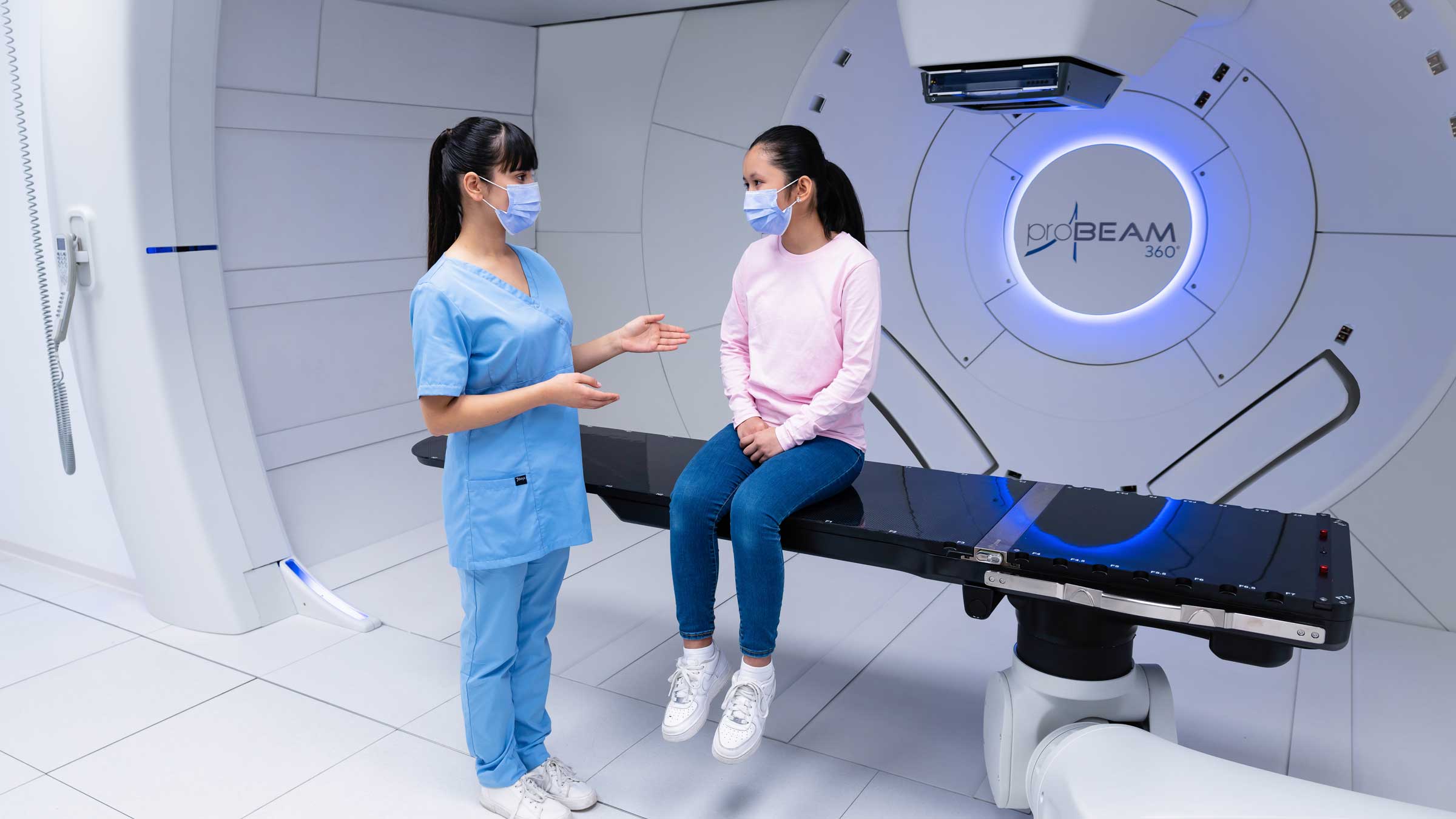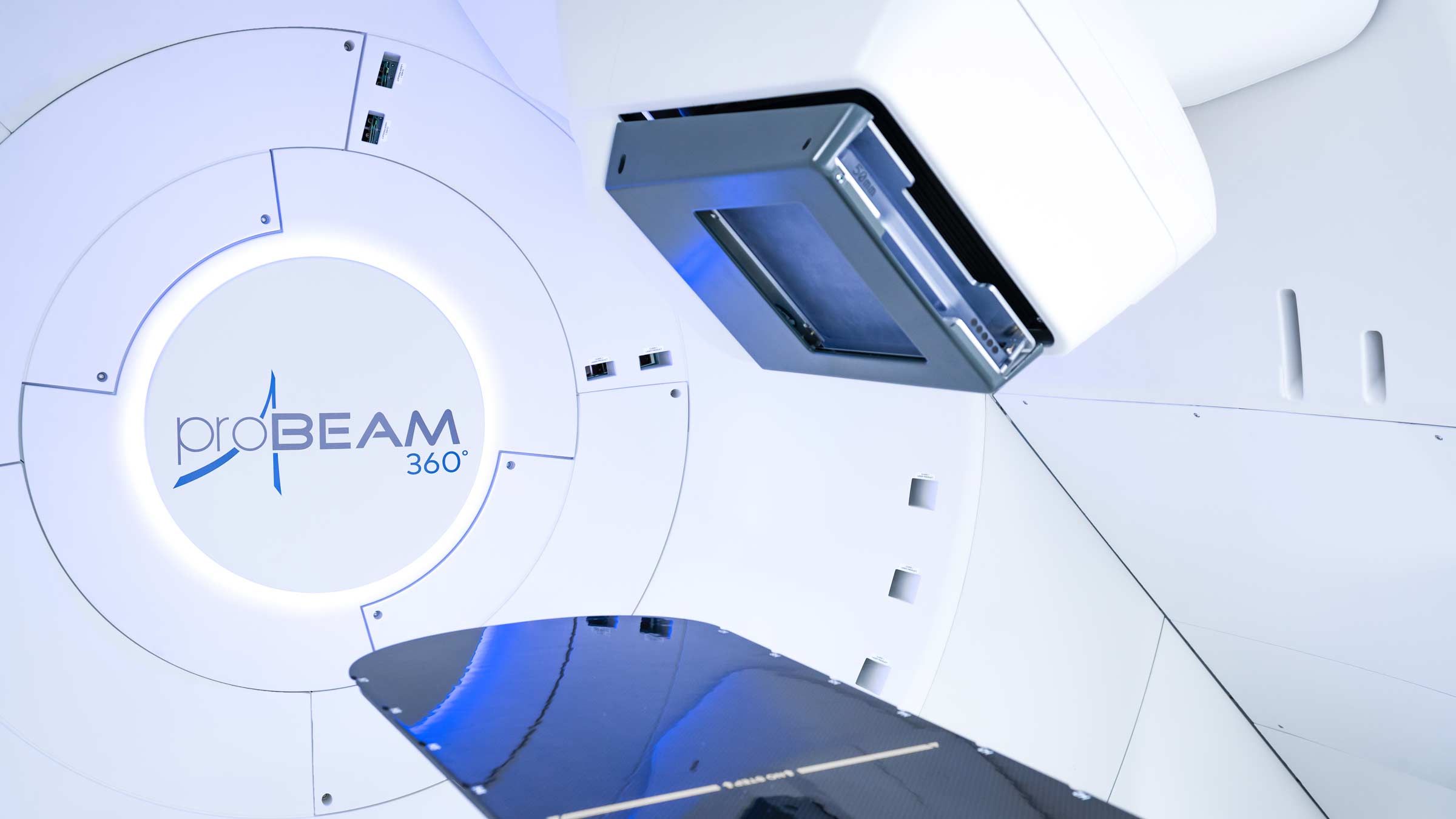Revolutionizing cancer treatment: The promising advancements of FLASH proton therapy

Proton therapy is one of the gold standards of precision cancer treatment. Proton therapy uses a proton beam to deliver positively charged particles — protons — to precisely target and destroy cancer cells.
The Ohio State University Comprehensive Cancer Center – Arthur G. James Cancer Hospital and Richard J. Solove Research Institute (OSUCCC – James), in close collaboration with Nationwide Children’s Hospital, opened central Ohio’s only proton therapy center in 2023. It's one of the most advanced proton therapy centers in the world, capable of delivering conventional proton therapy and outfitted to test and research a revolutionary form of proton therapy known as FLASH.
What is FLASH proton therapy?
FLASH proton therapy is an experimental form of proton therapy that delivers treatment literally in a flash. FLASH delivers an ultra-high dose rate of radiation in less than one second.
What makes Ohio State’s proton therapy center stand out compared to other centers across the country?
While proton therapy treatment has been available for several decades around the country, many of those systems use first-generation technology. Ohio State will be home to the most advanced proton therapy system available, and we’re building in the infrastructure to continuously upgrade the system to ensure we’ll continue to offer the most world-class treatment available. Our site will include a multi-room proton therapy center, allowing us to greatly expand our capacity to treat more patients.
Our proton therapy center will use a technology called the ProBeam 360 developed by Siemens-Varian. It uses a precision technology known as pencil beam scanning. Pencil beam scanning allows us to conform very tightly to the geometry of the tumor without touching any surrounding tissue. It also gives us the ability to ‘paint’ the proton treatment layer by layer on the tumor, allowing us to apply higher doses to denser areas of the tumor. All of these advanced capabilities enhance our ability to deliver the most precision cancer treatments to our patients.
What are the benefits of FLASH proton therapy and how does it differ from conventional therapy?
FLASH has not yet been FDA approved, but preclinical lab studies have shown that FLASH can be effective at controlling tumors, reduces the amount of toxicity that normal tissue is exposed to and is less taxing on the immune system.
For patients, the rounds of treatments normally scheduled across weeks and months could be reduced to a single treatment with FLASH, delivered in less than a second.
FLASH has the potential to deliver a potent and acutely precise treatment with minimal effects on a patient’s quality of life, during treatment and many decades after. FLASH proton therapy is non-invasive, making it ideal for treating inoperable tumors by painlessly delivering a high-energy proton beam through the skin from outside the body.
How does FLASH proton therapy work to destroy cancer cells?
With FLASH proton therapy, we use positively charged particles called protons instead of X-rays. We can precisely focus a proton beam directly at a tumor to kill cancer cells, using less radiation and reducing damage to surrounding tissue.
FLASH proton therapy is powered by an enormous particle accelerator called a cyclotron that feeds accelerated protons into a beam transport system. A device called a gantry is used to deliver the proton’s cone-shaped beam, spinning around the patient in a 360-degree radius that allows us to target a high-definition pencil beam to any point within the body. A complex system of magnets and a highly advanced computer mapping and CT imaging system allow us to control and maneuver the beam’s delivery with exact precision. This treatment process happens at about two-thirds the speed of light, or more than 100,000 miles per second.

How do FLASH’s side effects compare to traditional radiation cancer treatment?
With traditional radiation, the X-ray has an entry and exit point. That means that it touches all the tissue in between those two points in the body. In the process of treatment, healthy tissue can be damaged while targeting cancerous cells.
Conventional radiation treatment also requires multiple treatment sessions to fight tumors or lesions.
FLASH’s precision allows healthy tissue to be spared. FLASH is about 400 times more intense than conventional radiation from a dose rate perspective.
Traditional radiation therapy is still going to be an important part of many patients’ cancer treatment plans — and proton therapy won’t be the best option for everyone — but it gives us a critical tool in our treatment array.
What types of cancers will potentially be treated with FLASH?
FLASH proton therapy is being studied as an advanced treatment for both common and complex cancers in adults and children.
Clinical trials at The Ohio State University Comprehensive Cancer Center – Arthur G. James Cancer Hospital and Richard J. Solove Research Institute (OSUCCC – James) will be focusing on cancers of the gastrointestinal regions, central nervous system, skin, breast, lung, as well as head and neck cancers. Research has shown that it could also be effective for skull base tumors, pancreatic, prostate, pediatric and recurrent cancers.
When will FLASH proton therapy or clinical trials be offered to patients at Ohio State?
Research and clinical trials must be completed to ensure the safety and effectiveness of FLASH for patients. A multidisciplinary team at the OSUCCC – James featuring radiation oncologists, physicists, radiation biologists, translational researchers and respective departments at Nationwide Children’s Hospital and The College of Veterinary Medicine will work on clinical trials.
Our goal is to launch the first clinical trial with patients within three to five years.
Will some patients be eligible for trials? What will Ohio State’s trials focus on?
We've heard a lot from our patients. They've heard of FLASH and there's a lot of excitement about the possibilities.
We’re developing our registry protocols now for clinical trials.
We want to follow our patients long-term and look at any potential side effects from FLASH to see how they compare to patients treated with more conventional radiation therapy.
With proton therapy, protons haven't been around as long as traditional radiation therapy. There's initial evidence that the rate of developing secondary tumors might be far lower than with protons.
For example, if you look at a population of children treated for retinal blastoma, which is a tumor in the retina, the long-term data suggests that upwards of 50% to 60% of these patients can develop secondary malignancies from the therapy that they received decades ago.
Our hope is that there will be no cancer cases due to treatments decades earlier.

The choice is clear
Our experts develop and deliver the most advanced targeted treatments leading to better outcomes and more hope.
Learn More




